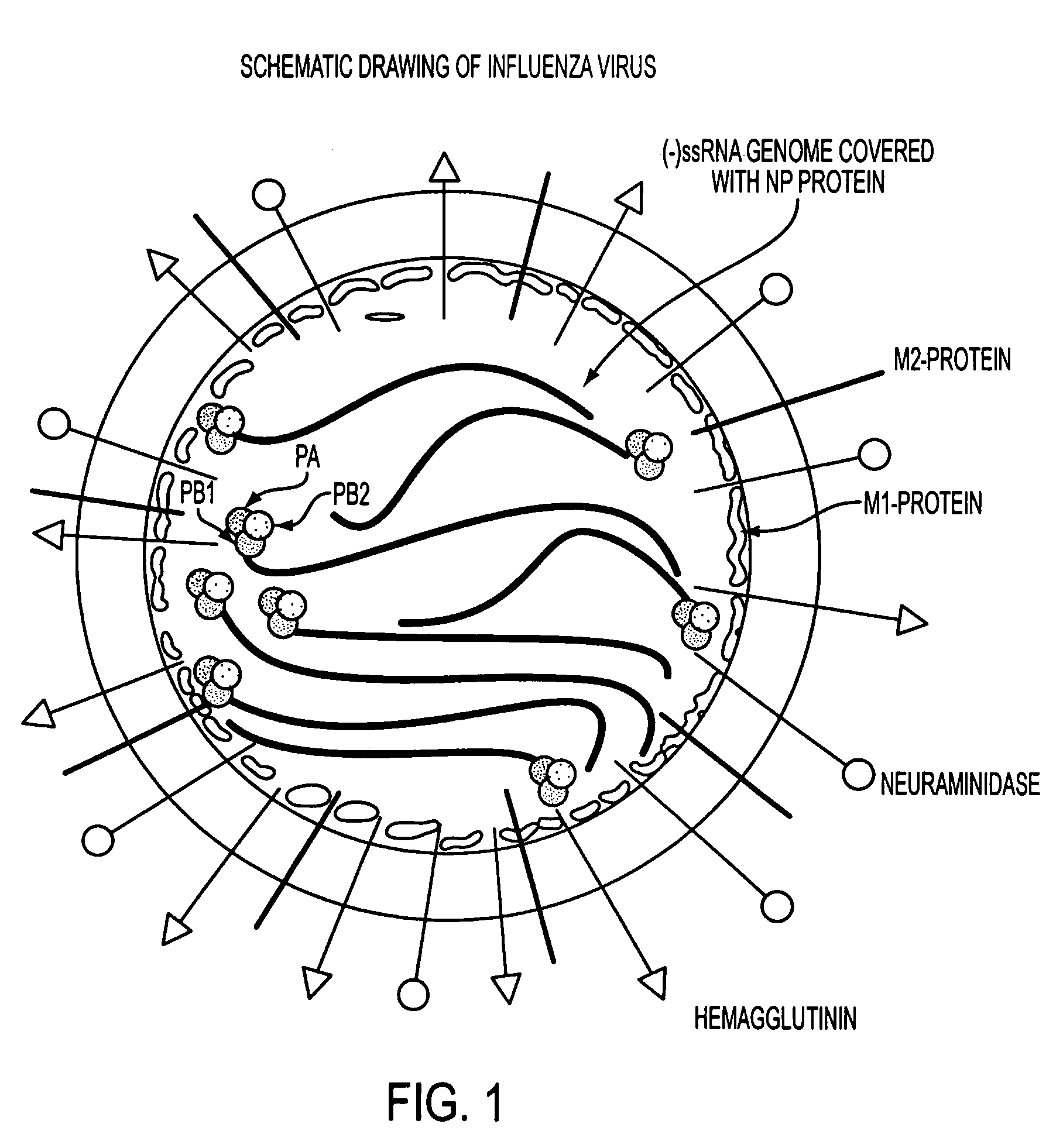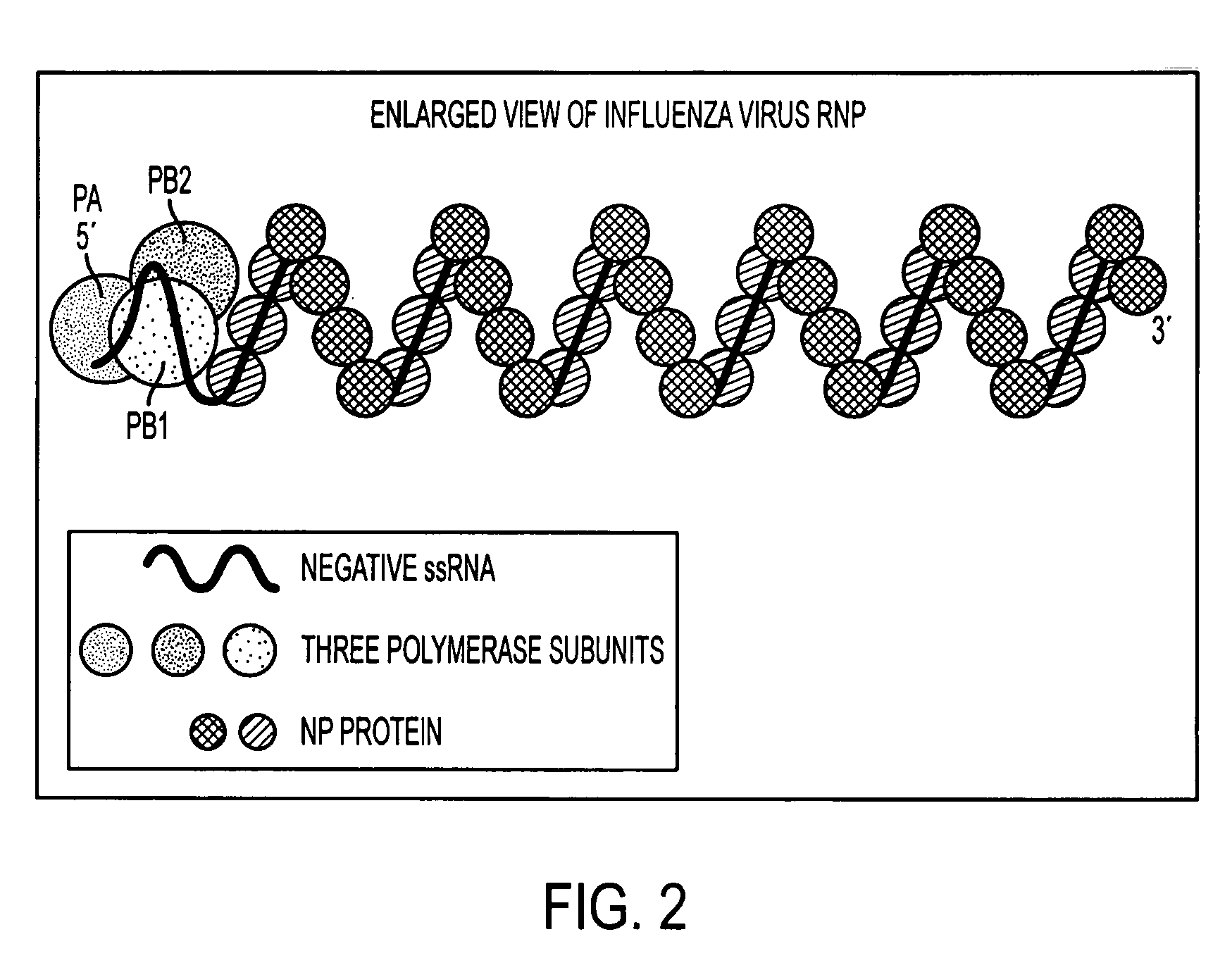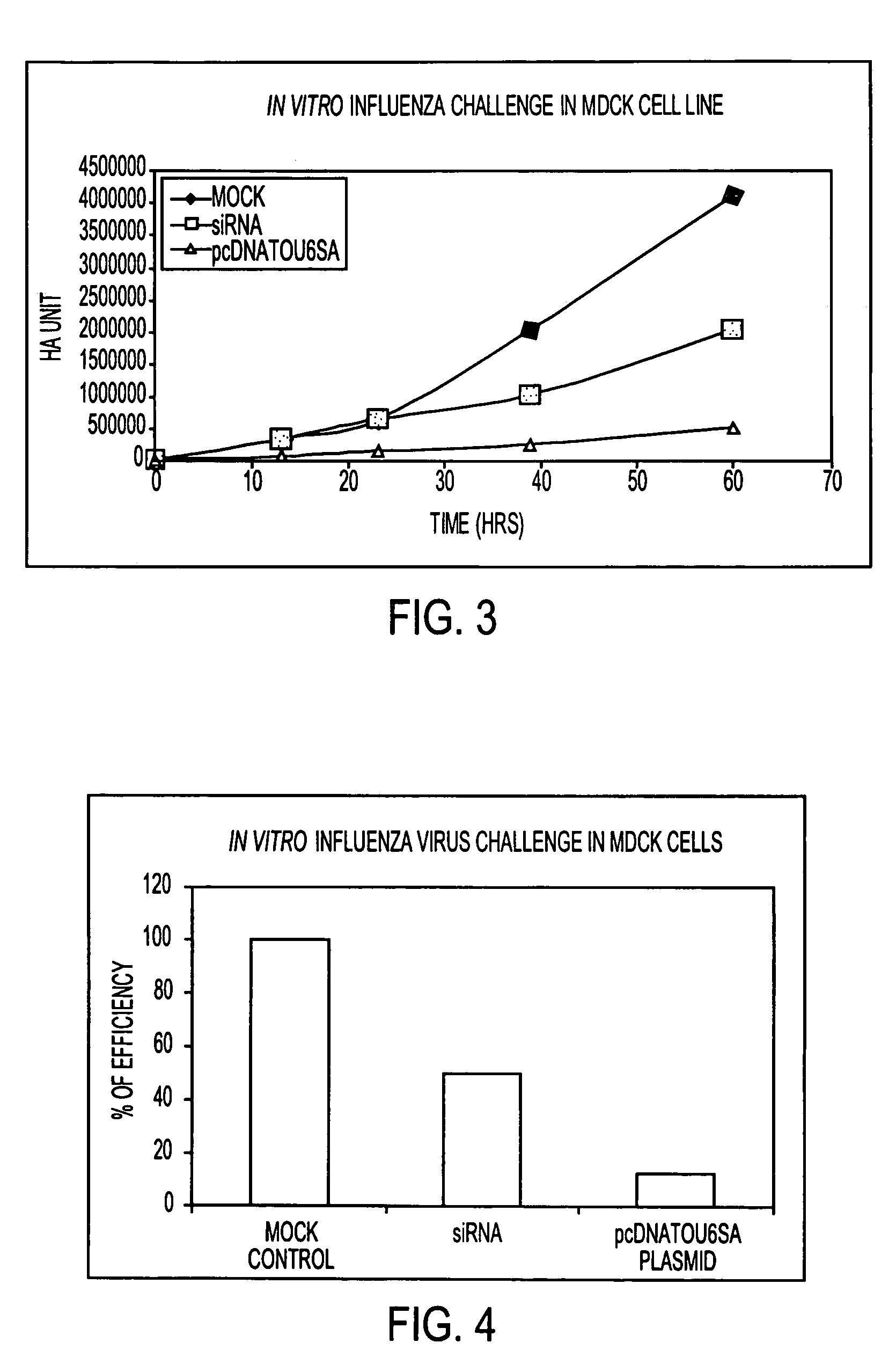Potent inhibition of influenza virus by specifically designed short interfering RNA
a technology of interfering rna and influenza virus, which is applied in the direction of biocide, genetic material ingredients, organic chemistry, etc., can solve the problems of inability to grow by protein synthesis or reproduction apart from living cells, and achieve the effect of greater suitability as a drug targ
- Summary
- Abstract
- Description
- Claims
- Application Information
AI Technical Summary
Problems solved by technology
Method used
Image
Examples
example 1
[0037]Graphs 3 and 4 demonstrate the efficacy of siRNA in commercially available MDCK cell cultures. The vertical axis indicates the level of influenza virus. The horizontal axis indicates time (hours). The line indicated as blue shows the results over time for a control in which no siRNA is added to the cell culture. The line indicated in red shows the results over time when the synthetic si RNA in aqueous suspension was transfected to the cell culture. The line indicated in green shows the results over time when siRNA in plasmid form was transfected to the cell culture. Twenty four hours after transfection cells were infected with influenza virus.
[0038]Graph 4 presents the results shown in Graph 3 in bar form and shows the inhibitory effect of siRNA in synthetic and plasmid form when compared to the control.
example 2
[0039]Graph 5 shows the results conducted in a standard laboratory mouse (Balb / c) model. The vertical axis expresses the average body weight in five (5) mice. The horizontal axis is time expressed in days. The line indicated in blue shows the effect on the average weight of five mice administered internasally with the cationic lipid emulsion of the siRNA plasmid in a 19 μg / mouse dosage. The red line shows the results when the same emulsion was identically administered to five mice in a 7 μg dosage. In both cases, the dosage was administered at day “0”. Thereafter, no further siRNA plasmid was given. At day “1”, a lethal dose of influenza virus was given to both groups of mice. The effect on body weight was taken as a measure of efficacy. It is significant that at the higher dosage (blue line), the siRNA plasmid was almost completely effective in preventing loss of body weight, indicating that the siRNA plasmid is silencing the influenza virus nucleocapsid gene.
example 3
[0040]In Graph 6, the same mouse model was used. The brown line was a control group of five mice which received neither siRNA in any form nor was this group exposed to influenza virus. The line indicated as green shows the result with five mice who intranasally received siRNA in the AAV-siRNA form on day “0” and a lethal dose of the influenza virus at day “1”. The line indicated as blue represents the results in five mice which received no siRNA in any form but did receive the influenza virus on day “1”. As can be seen, the control (brown line) group continued to thrive and in fact continue to survive long past the end of the brown line, as was to be expected. The interesting results are seen when comparing the green and blue indicated lines. The influenza virus quickly killed all of the mice which had not received the siRNA in any form (blue indicated line). However, the mouse group receiving the AAV-siRNA followed by a lethal dose of influenza virus 24 hours later (green line) con...
PUM
| Property | Measurement | Unit |
|---|---|---|
| weight | aaaaa | aaaaa |
| metabolic energy | aaaaa | aaaaa |
| length | aaaaa | aaaaa |
Abstract
Description
Claims
Application Information
 Login to View More
Login to View More - R&D
- Intellectual Property
- Life Sciences
- Materials
- Tech Scout
- Unparalleled Data Quality
- Higher Quality Content
- 60% Fewer Hallucinations
Browse by: Latest US Patents, China's latest patents, Technical Efficacy Thesaurus, Application Domain, Technology Topic, Popular Technical Reports.
© 2025 PatSnap. All rights reserved.Legal|Privacy policy|Modern Slavery Act Transparency Statement|Sitemap|About US| Contact US: help@patsnap.com



